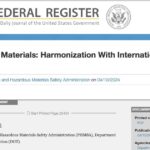When a large-scale hazmat incident kicks off, the public expects to know if there is any danger in the air they breathe.
Nowhere is that more evident right now than near the Ohio-Pennsylvania border where a derailed Norfolk Southern train created a weeks-long hazmat emergency. After the threat of explosion was removed by putting holes in the derailed cars to let the vinyl chloride off gas and run out, residents are worried about air and water quality — many are angry, scared and reporting illness symptoms and sick or dead animals.
The residents’ fear and anger were heightened when Norfolk Southern officials opted to not appear at a town meeting to address those concerns. They, according to BBC reporting, cited threats against their personnel as reason for canceling. The U.S. Environmental Protection Agency and state agencies were on site conducting air and water monitoring.
Also Read: Prolonged Hazmat Operations at Ohio Train Derailment
After monitoring the air quality, EPA said earlier in the week that it had not detected harmful levels of contaminants. It has also been monitoring the air inside hundreds of homes and said it found no chemicals, BBC reported.
“I’m just as frustrated. I live in the community, just like you,” East Palestine, Ohio Mayor Trent Conaway, said at the meeting. “I’m trying to get answers.”
And while upset residents is as much of a communication problem as it is a hazmat problem, it highlights the need for reliable air monitoring.
At the same time, a large plant nursery fire in Kissimmee, Florida brought out hazmat teams to establish air monitoring. The concern there, according to WESH, is both the smoke from the 2-acre fire and the proximity of propane tanks.
Also Read: Two Derailments in 10 Days Shows Need for Hazmat Rail Training
“We’ve got remote monitoring set up and we’re not yet getting any signal that would cause us to call for an evacuation, but that could change,” Osceola Fire Rescue Deputy Chief Jon Haskett told WESH. “If there is an evacuation, it would be due to the smoke and carbon monoxide off the fire.”
There is some promising work being done to improve how hazmat and health and environmental officials can predict airborne particle and gas movements. Lincoln Laboratories led a test that looked at 120 sites in New York City streets and subway stations.
According to one of the lead researchers on that study, emergency managers don’t have many options other than to evacuate the area when a biological or chemical sensor is triggered. Yet current sensors tend to have high false-alarm rates, particularly in dirty environments. “You really can’t afford to make that evacuation call in error. Not only do you undermine people’s trust in the system, but also people can become injured, and it may actually be a non-threatening situation.”
Also Read: Study Looks to Predict Chemical, Airborne Threat Movement
The goal of this testbed is to develop architectures and technologies that could allow for a range of appropriate response activities. For example, the team will be looking at ways through which air flow could be constrained or filtered in place, without disrupting traffic, while responders validate an alarm. They’ll also be testing the performance of new chemical and biological sensor technologies.
Of course no hazmat team can sit back and wait for new tech to solve its threats. And these two recent incidents are a great springboard for hazmat teams to establish air-monitoring drills internally and with external partners. Those partners should be first due firefighters and, where possible, police. This type of joint-training can go a long way to prepping both agencies for their roles in a major release, without going through all of the logistics of a full-blown drill similar to multi-agency active shooter drills.
Also Read: NIOSH: Why Firefighters Must Understand Multi-Gas Monitor Readings
For example, a rural volunteer department and a mutual-aid partner could be divided into incident command and first- and second-arriving crews at a mock derailment or leak. First-arriving crews can relay what they find to command, who then must deploy air monitoring units based on weather conditions, and adjust to what information they report back.
Obviously, this can be a tabletop drill, but would be more effective with crews driving the communities and responding in real time. Changing the crew responsibilities with different weather and material release conditions will give everyone both perspectives without the drill becoming too predictable.
This is also a great time to pull in representatives from regional and state health and environmental agencies. They will almost certainly be heavily involved after the initial response, as they are in Ohio. Likewise, reach out to your regional EPA office to see if it has representatives who can participate in or lead air monitoring evolutions.
Original post – Copyright © 2023 HazmatNation.com. Externally linked references may hold their own independent copyright not assumed by HazmatNation











